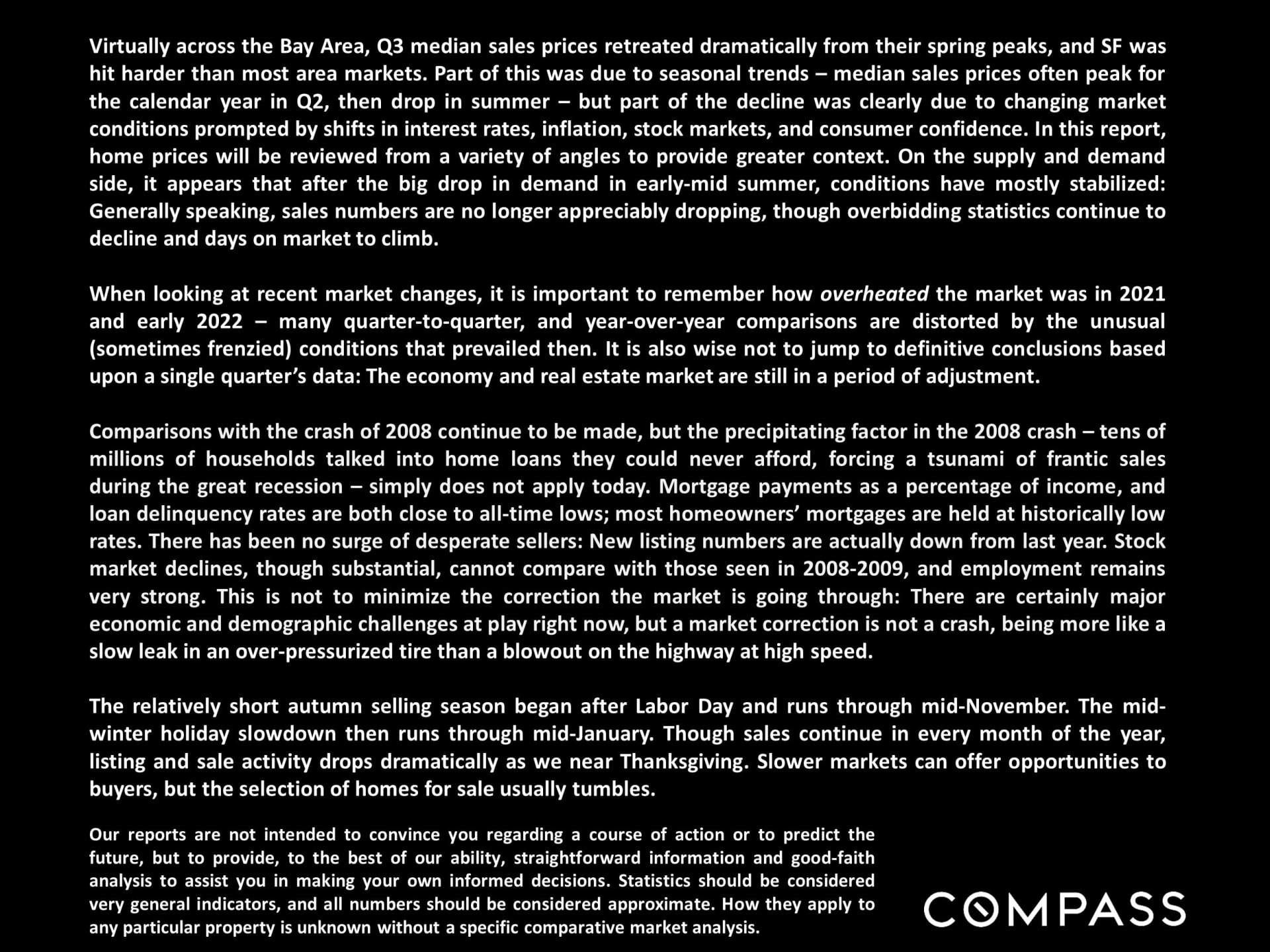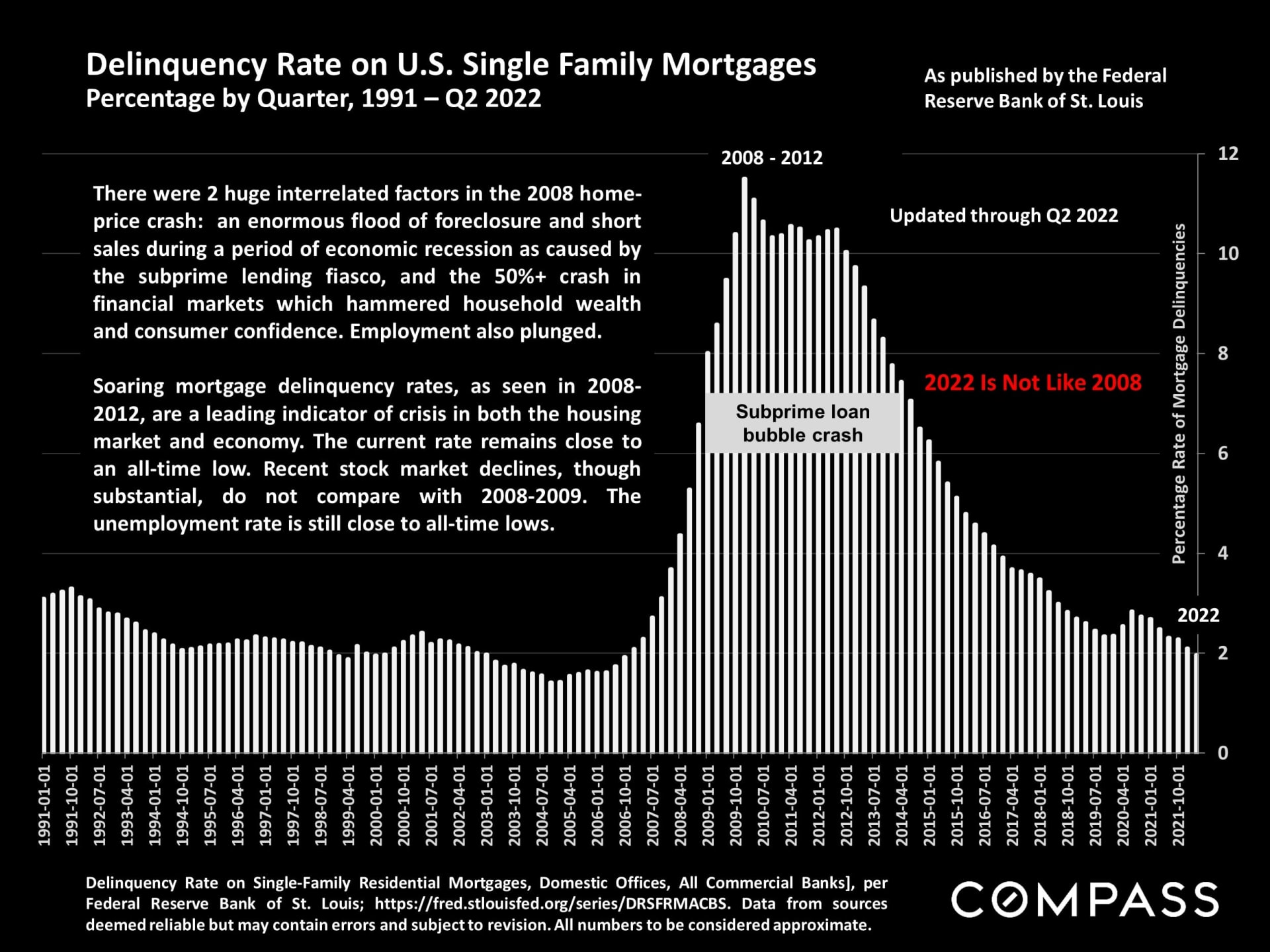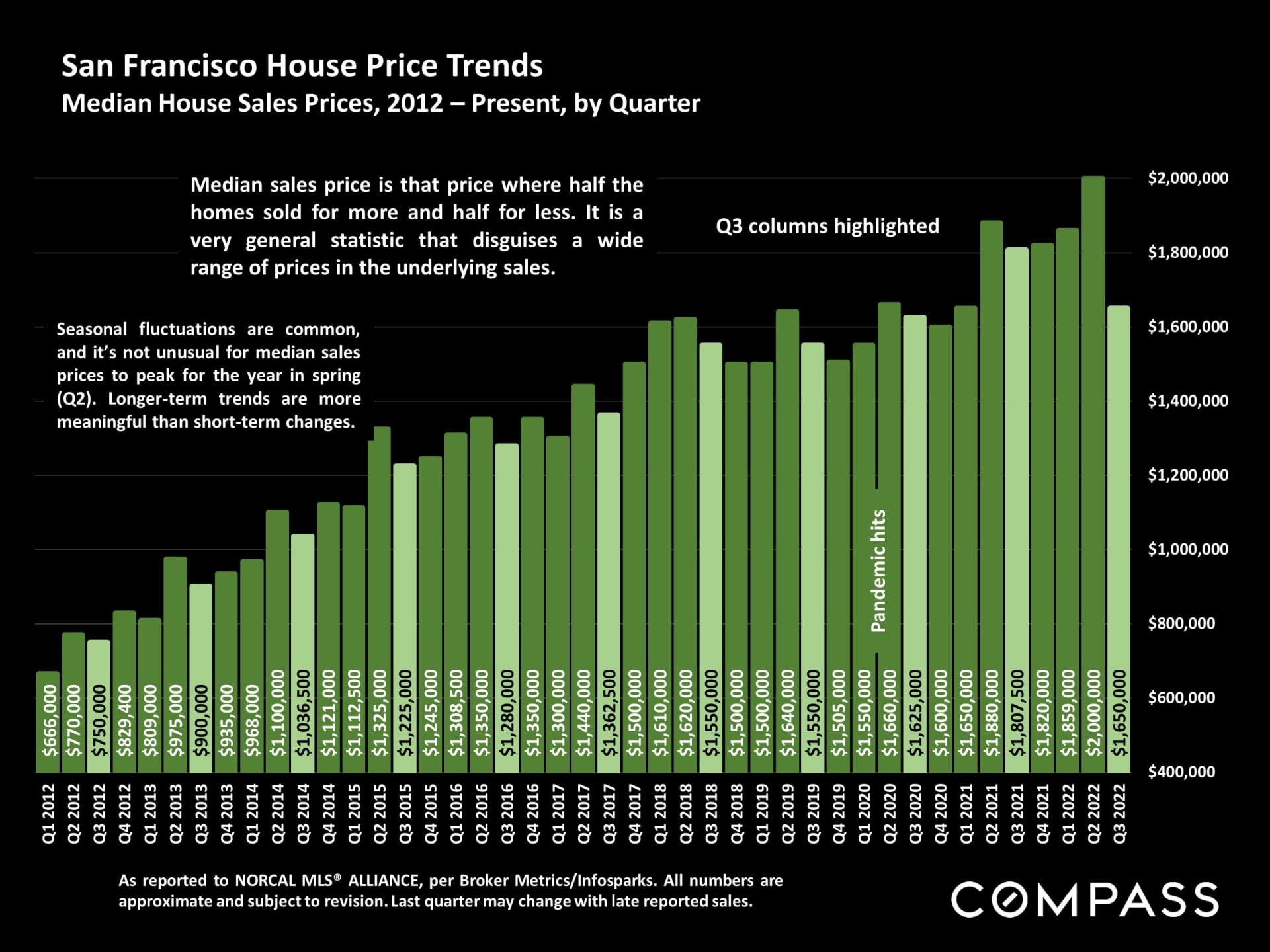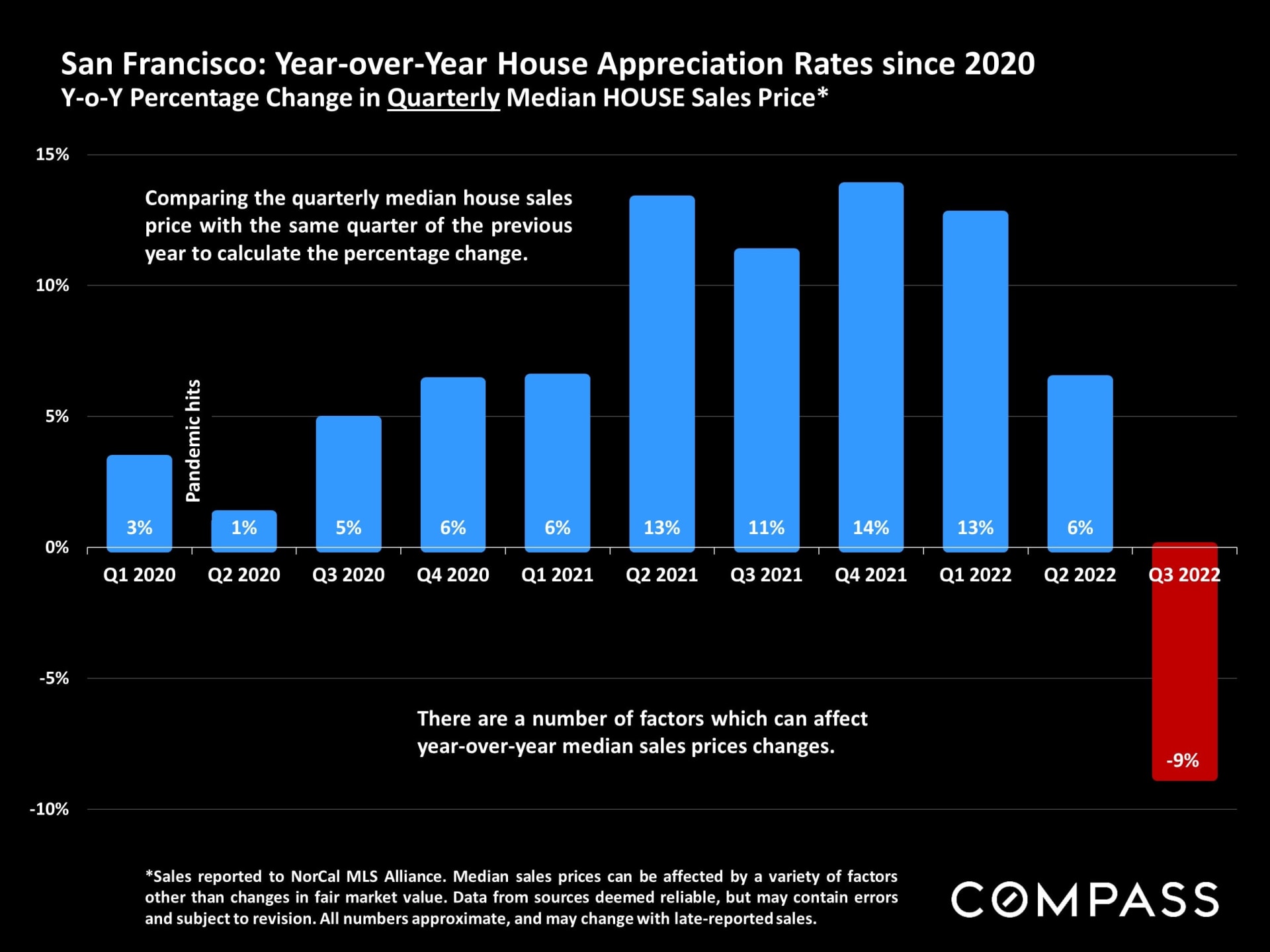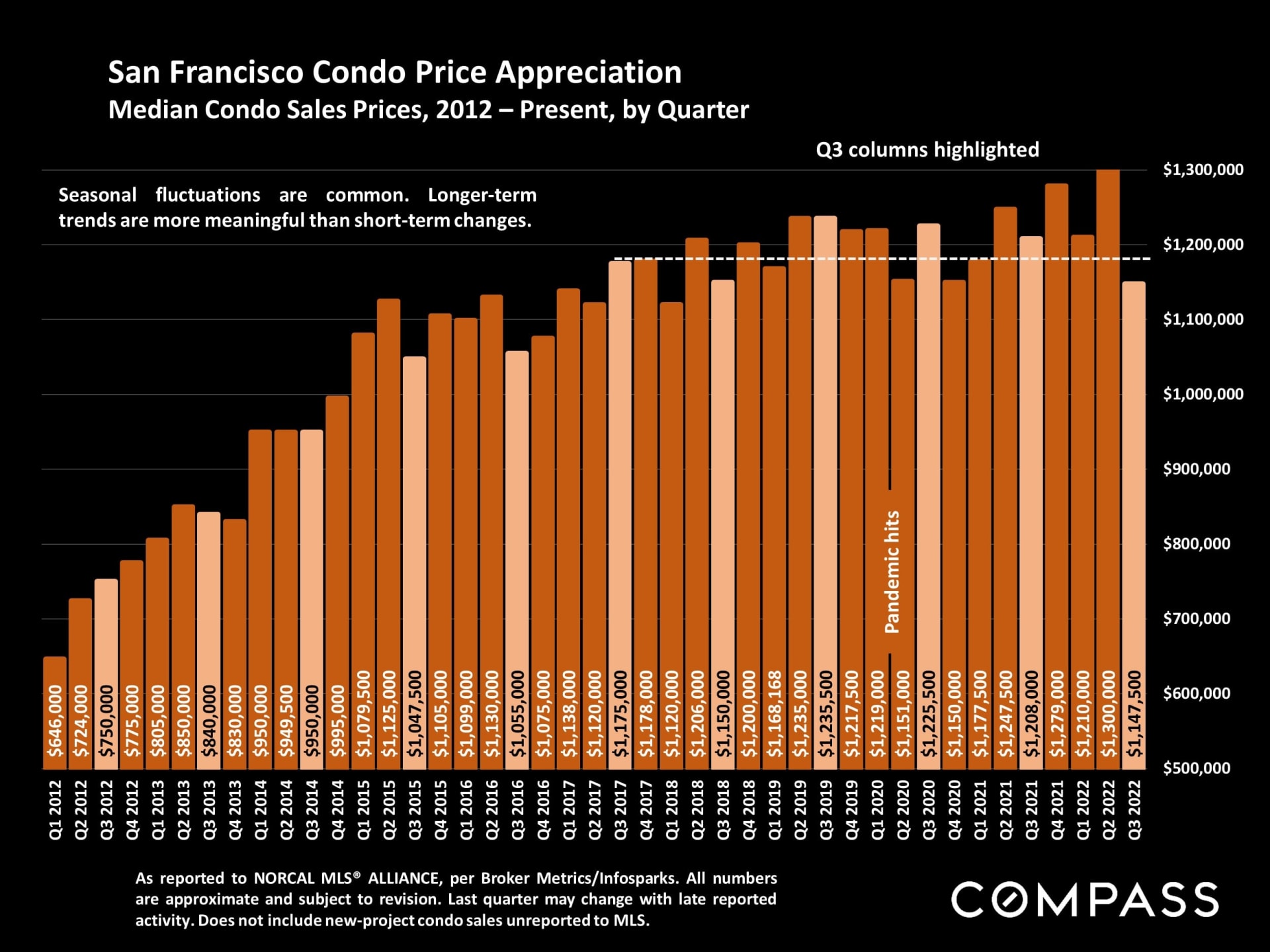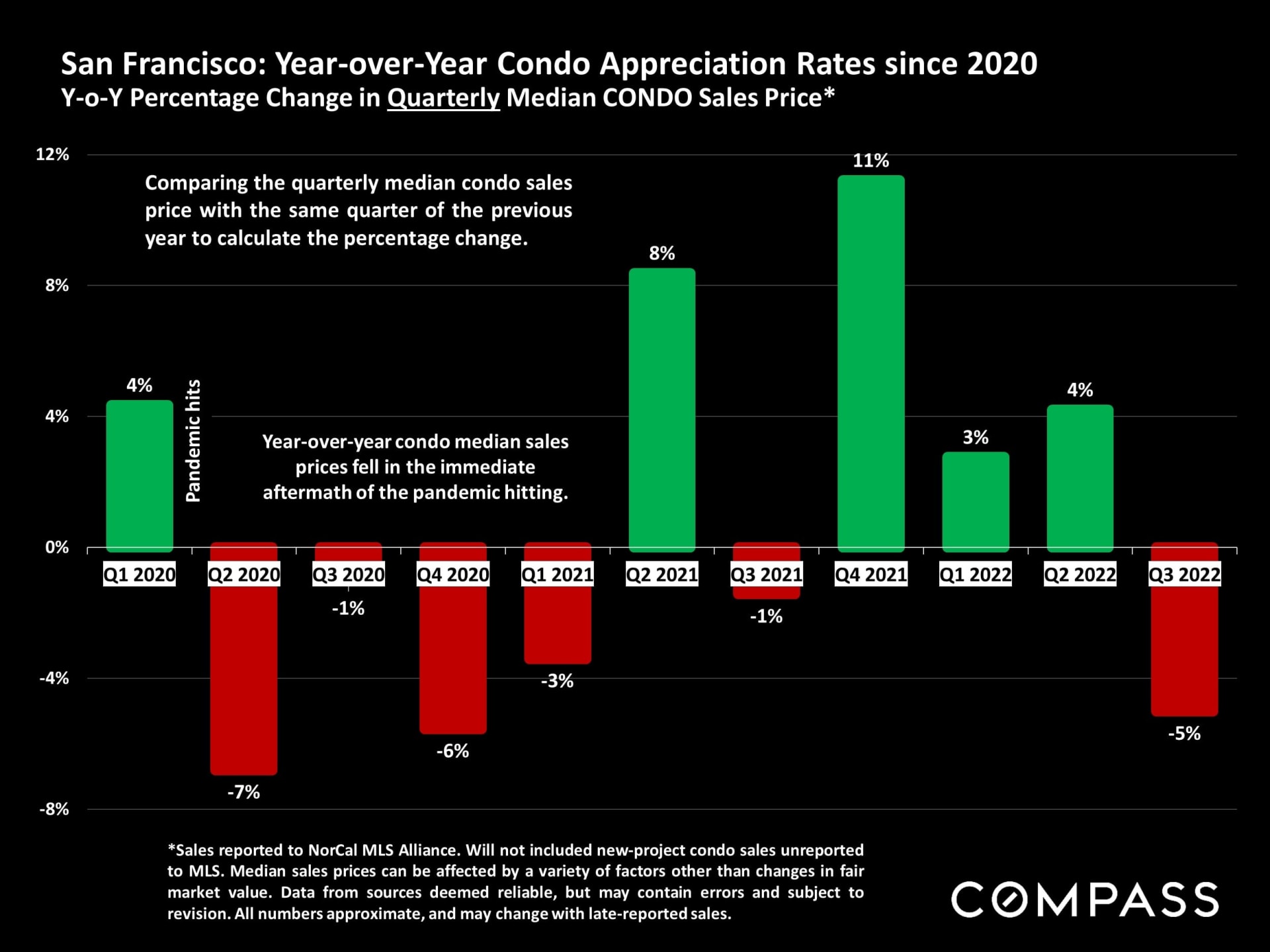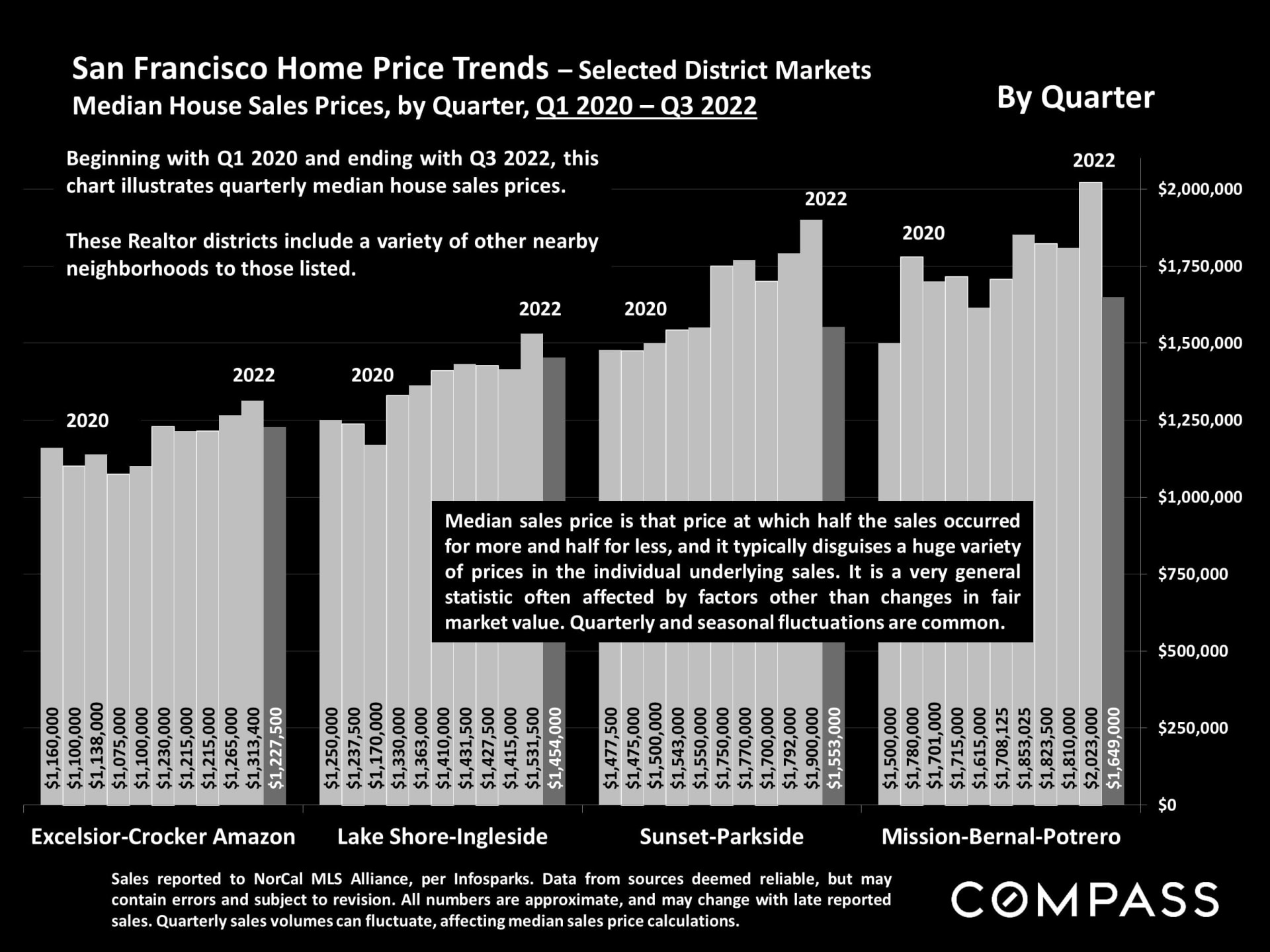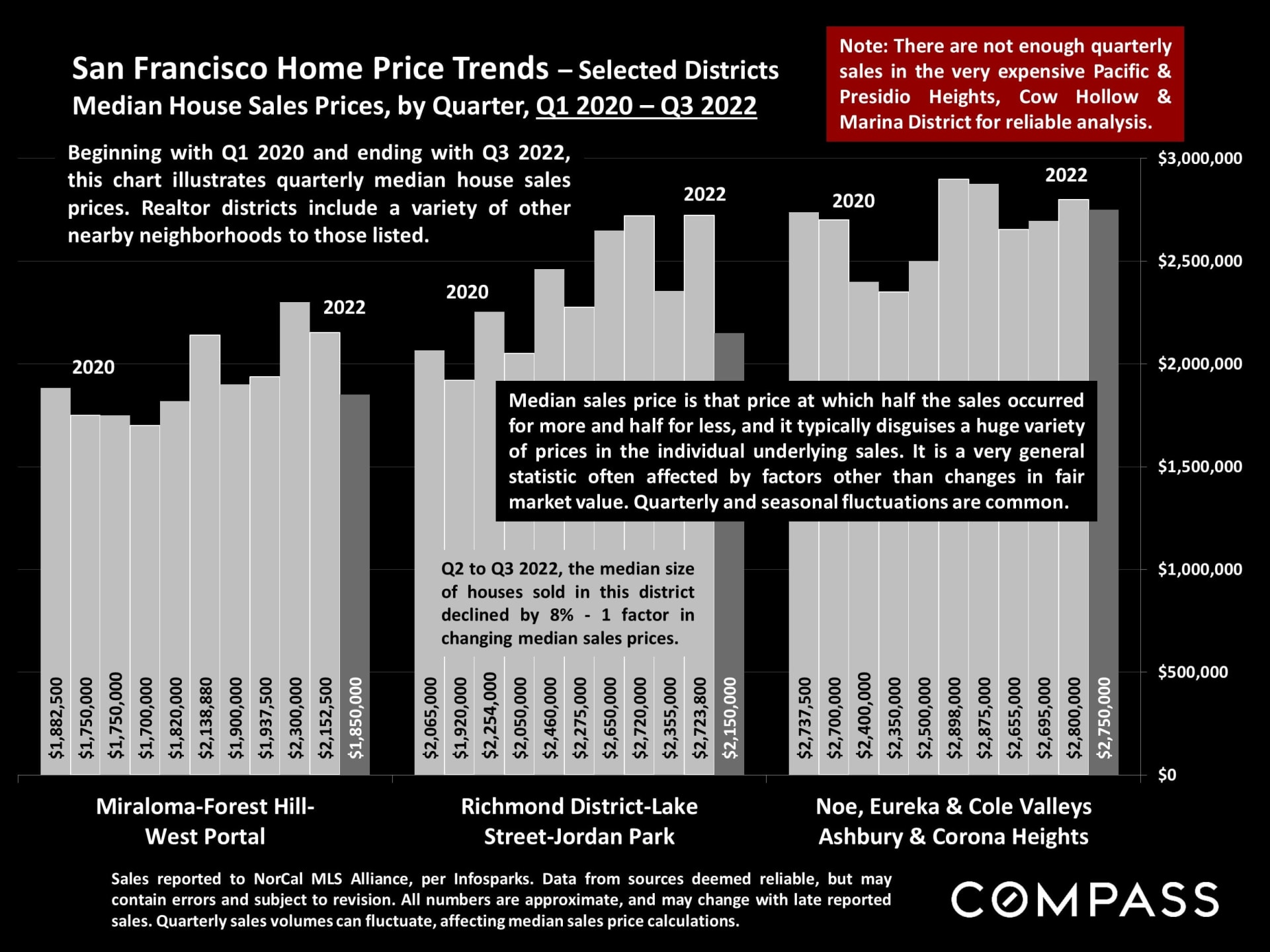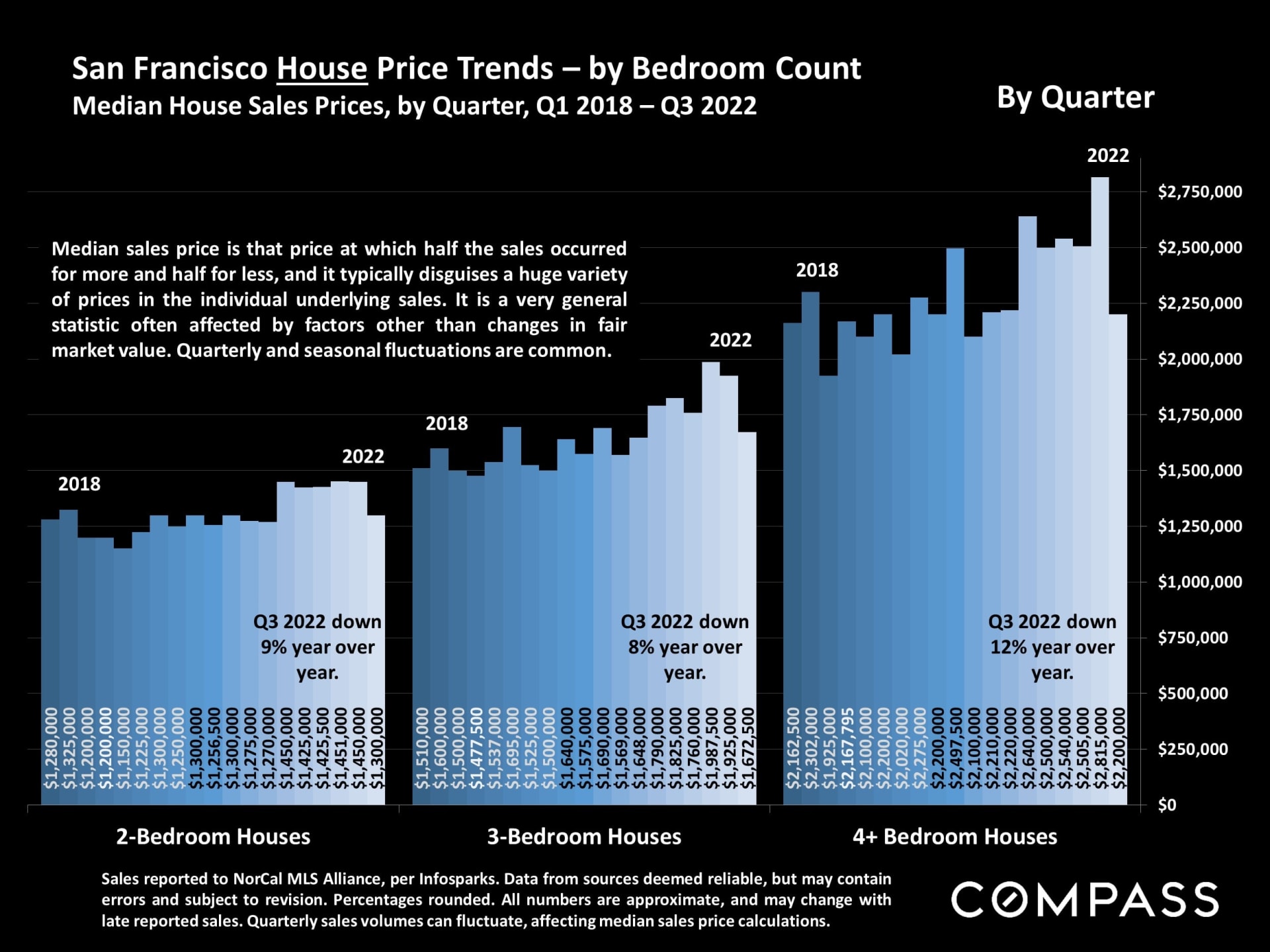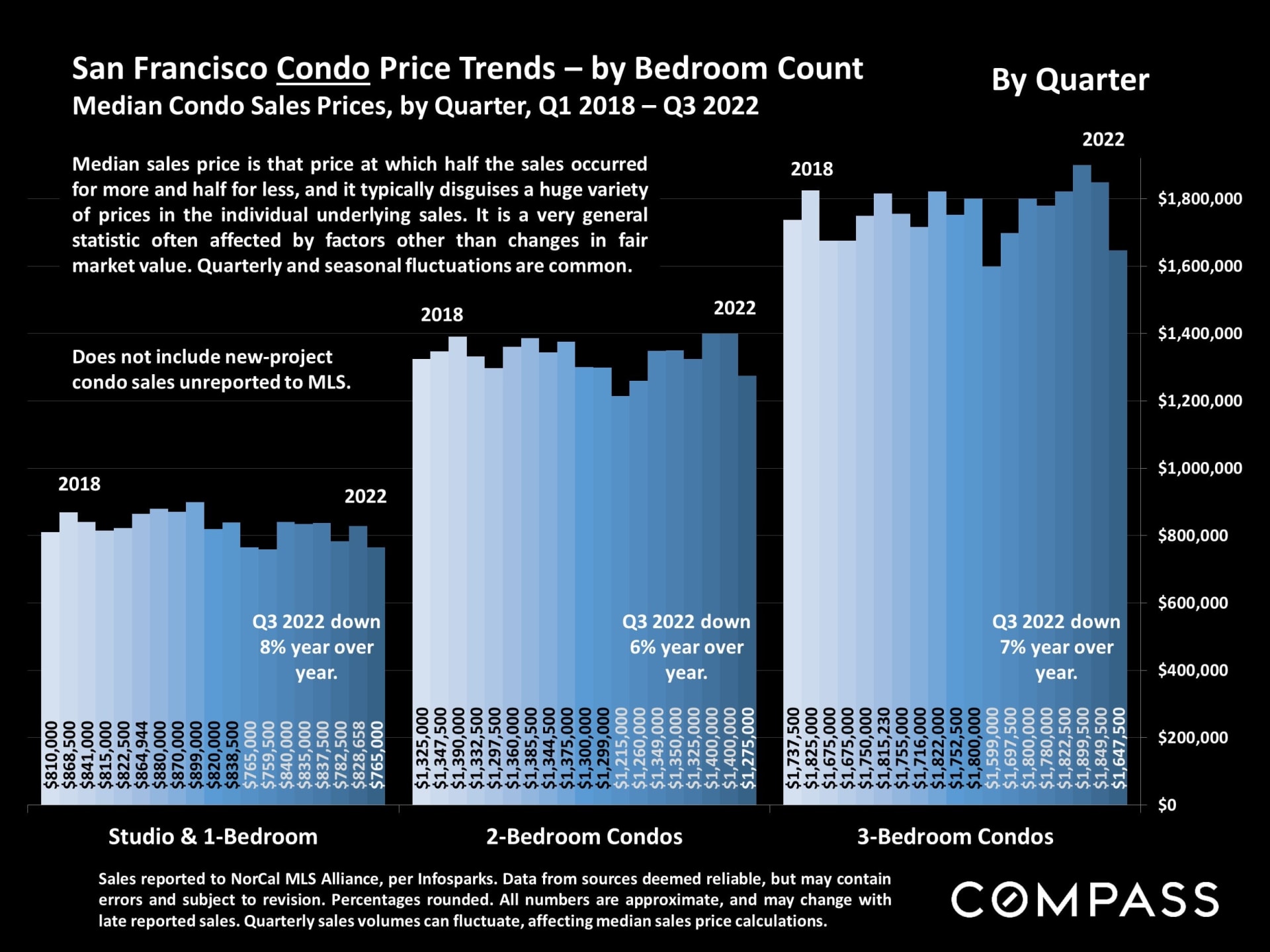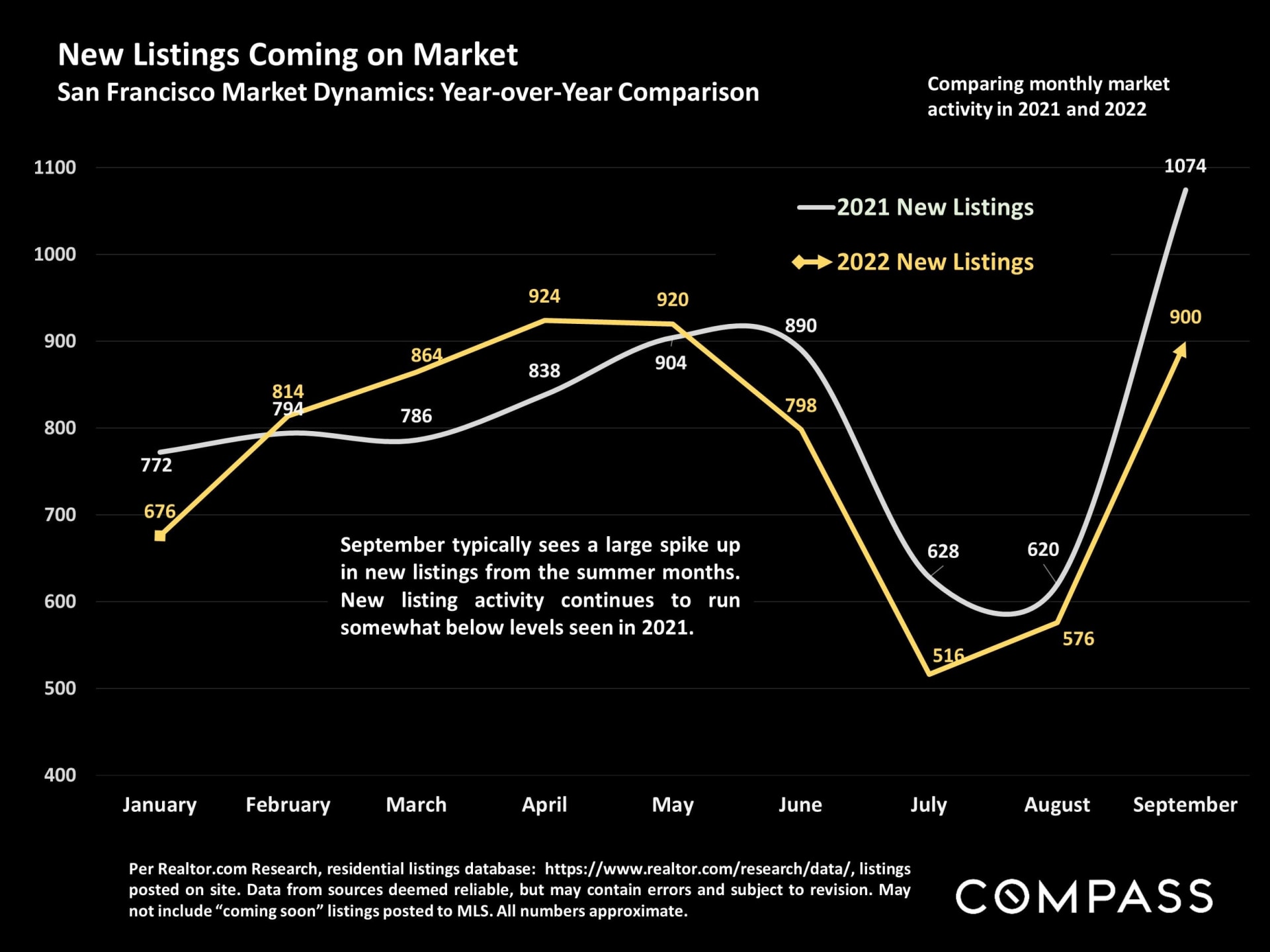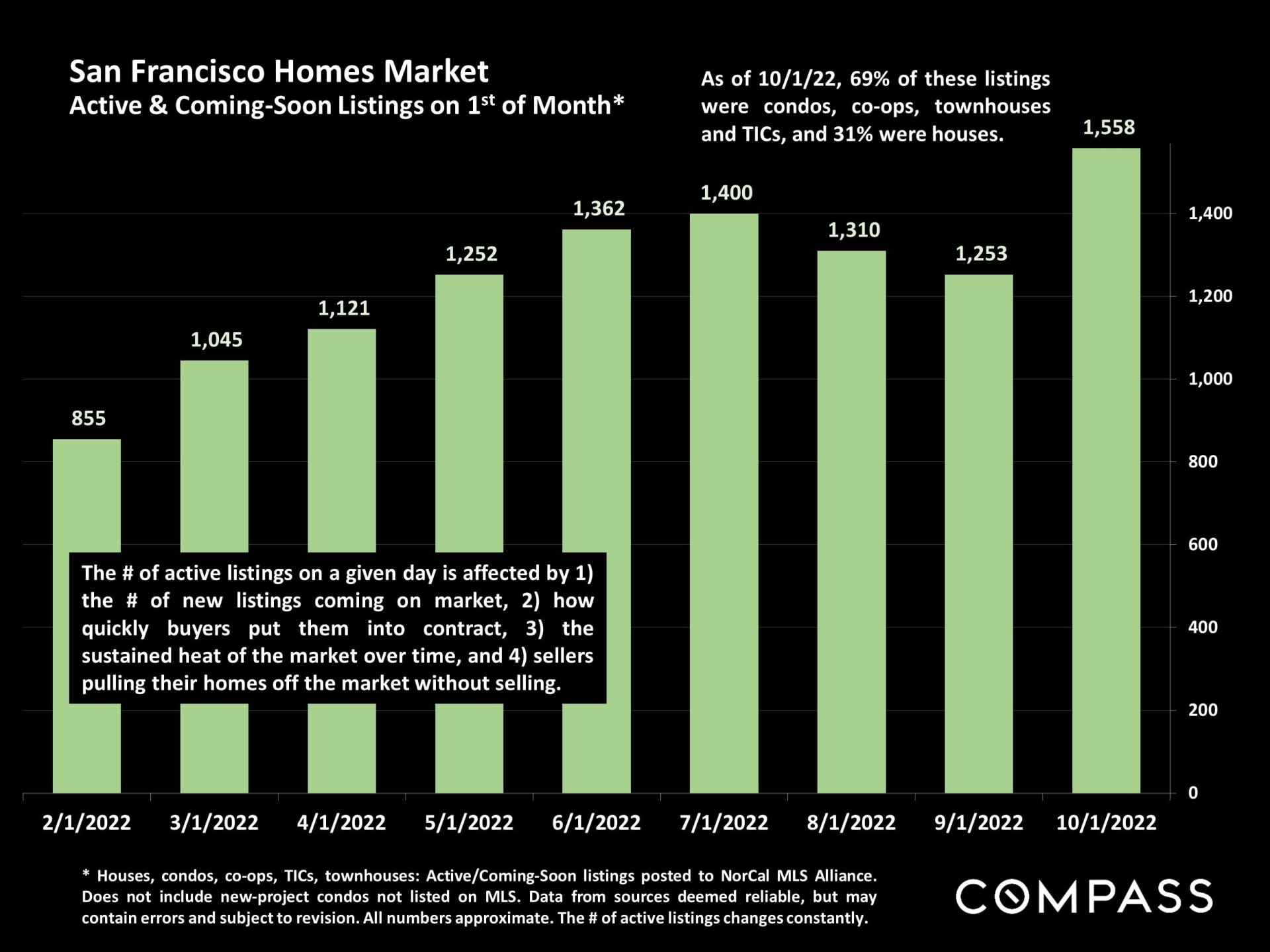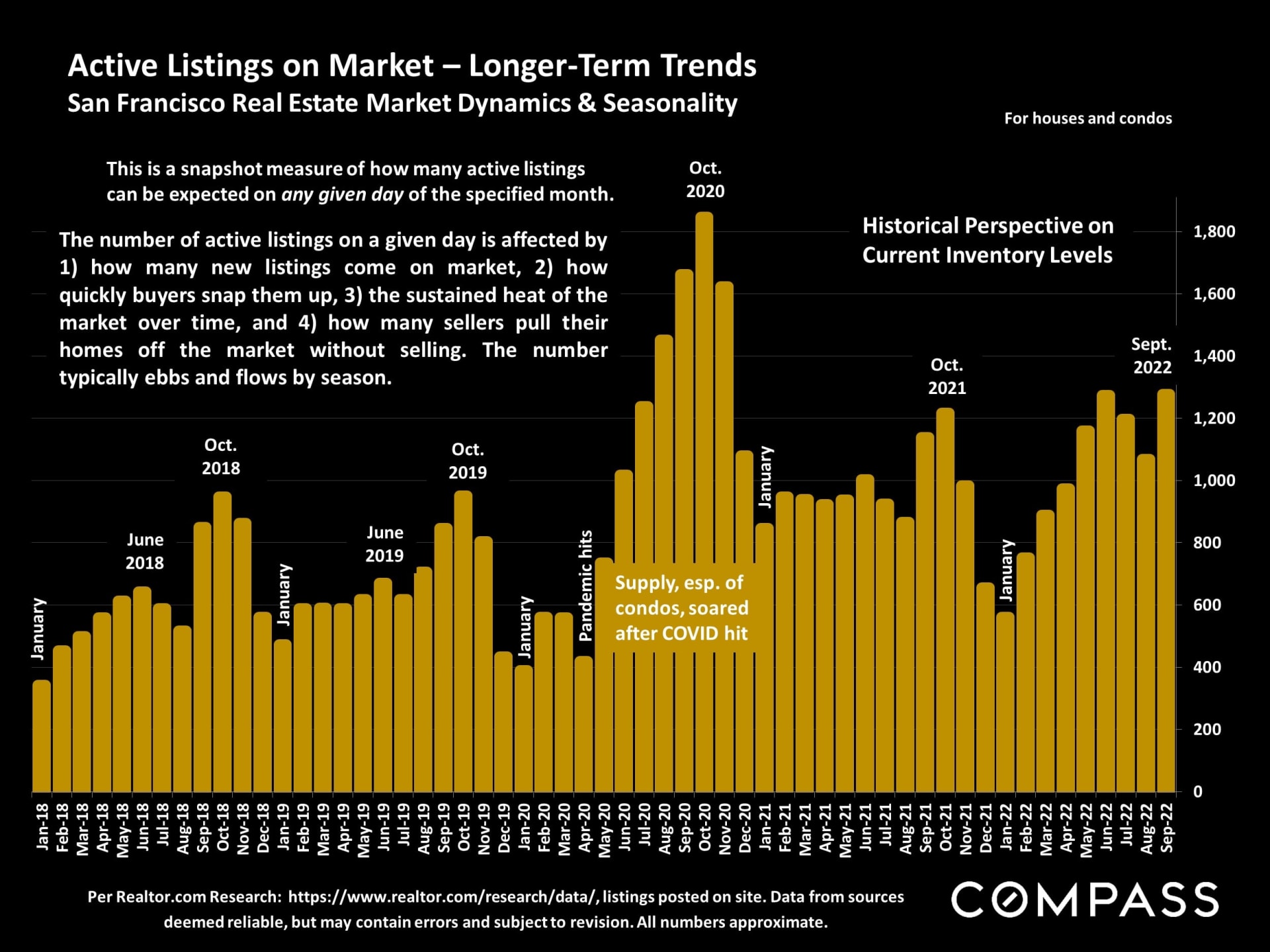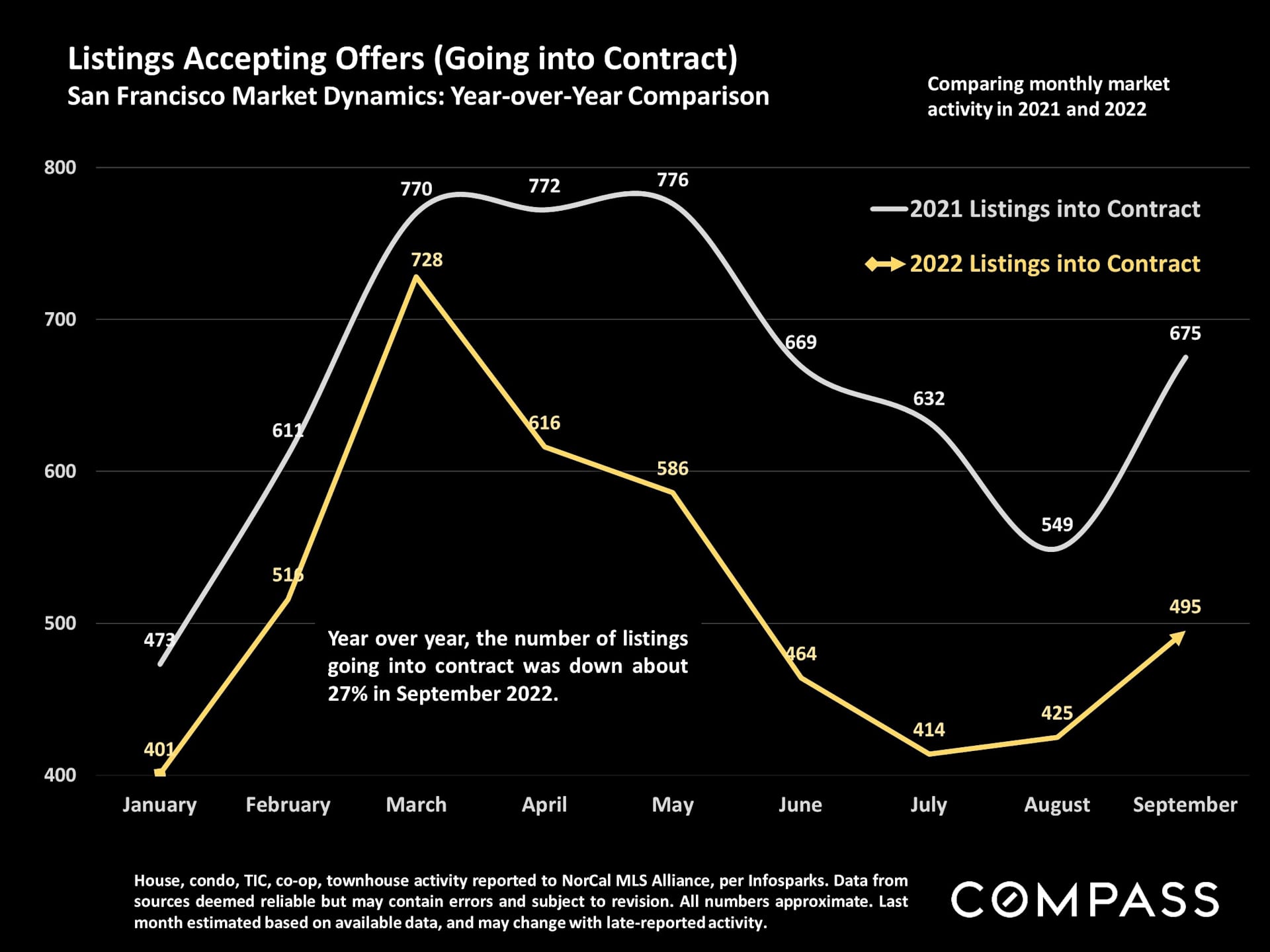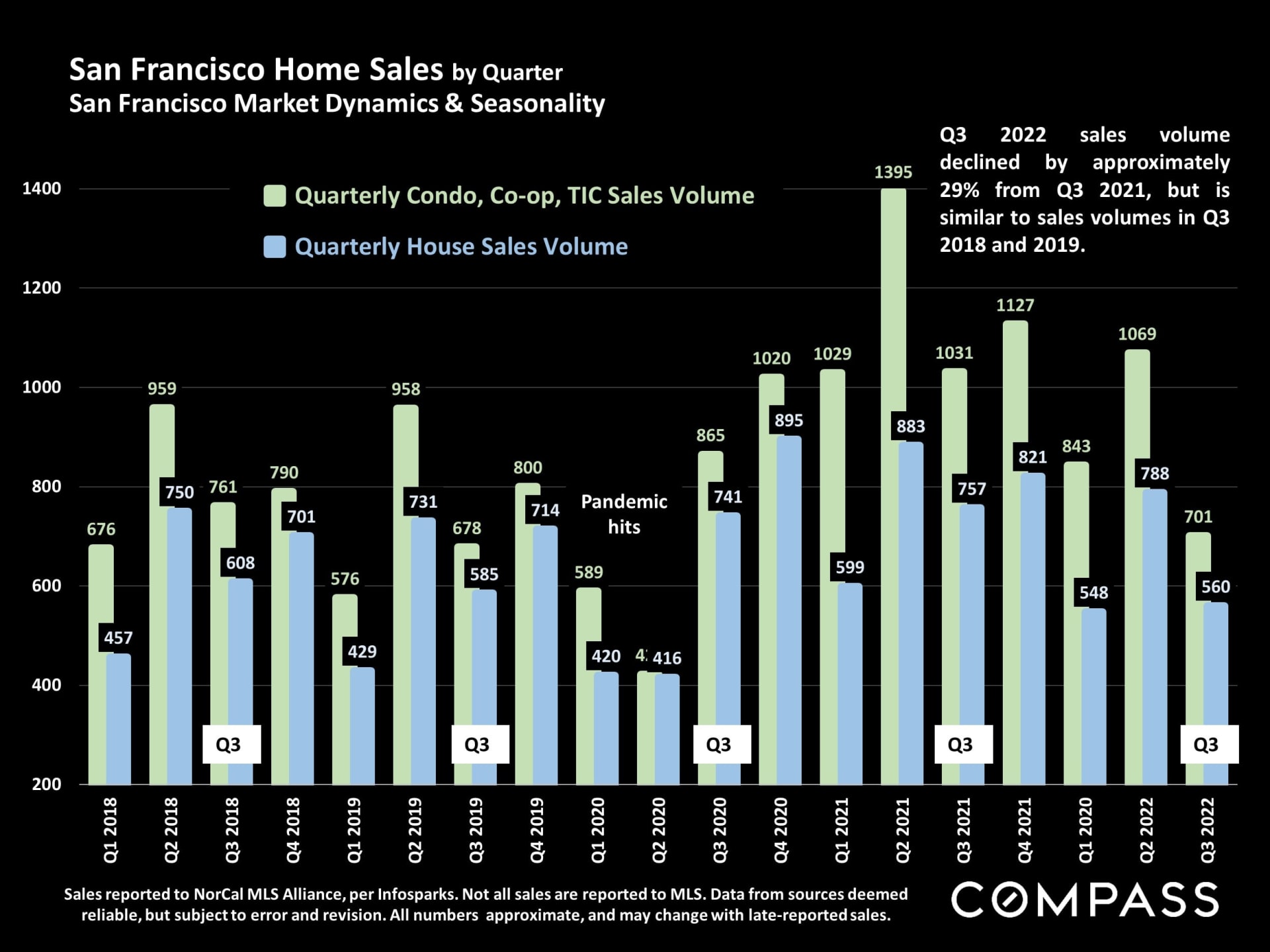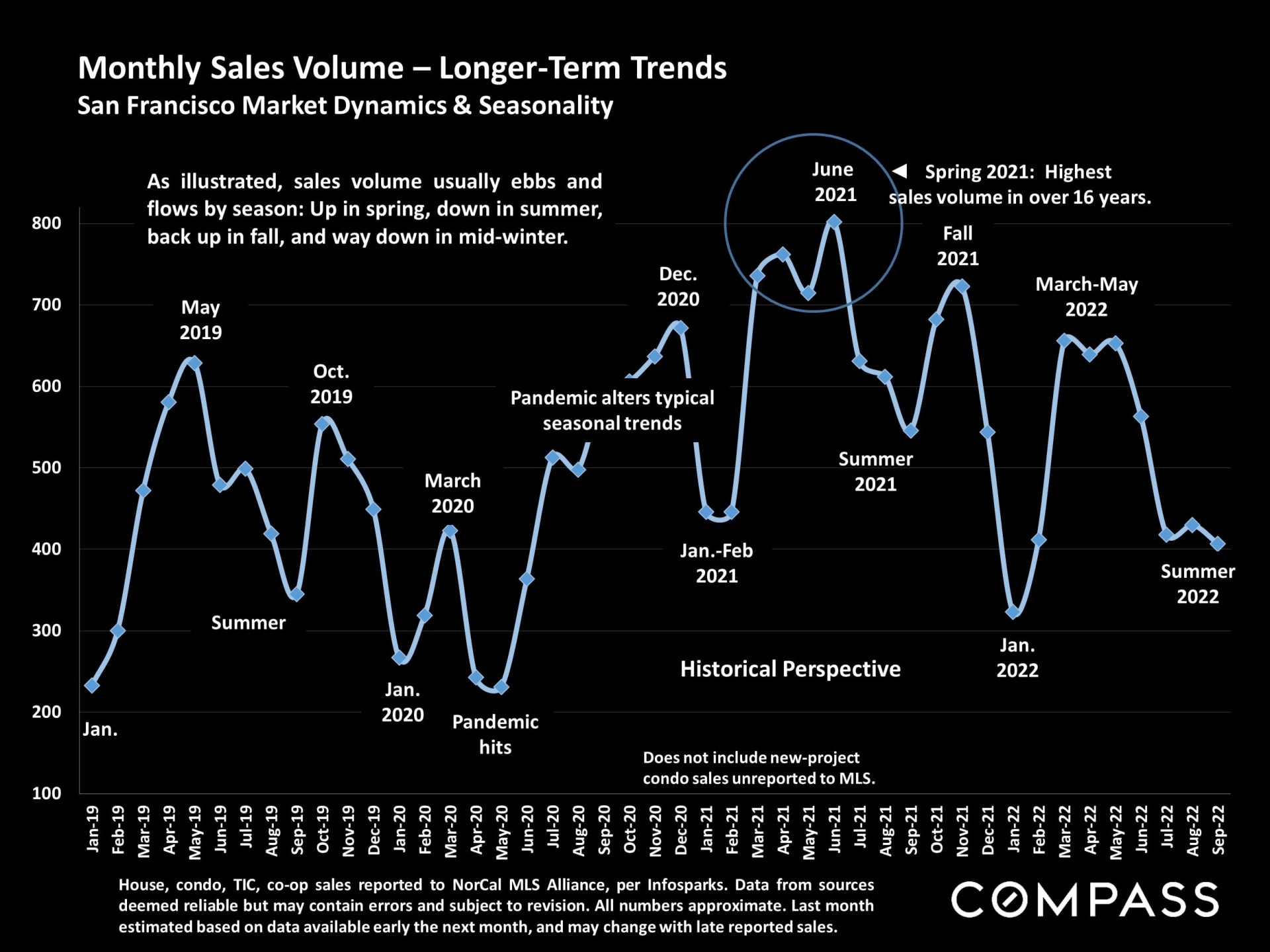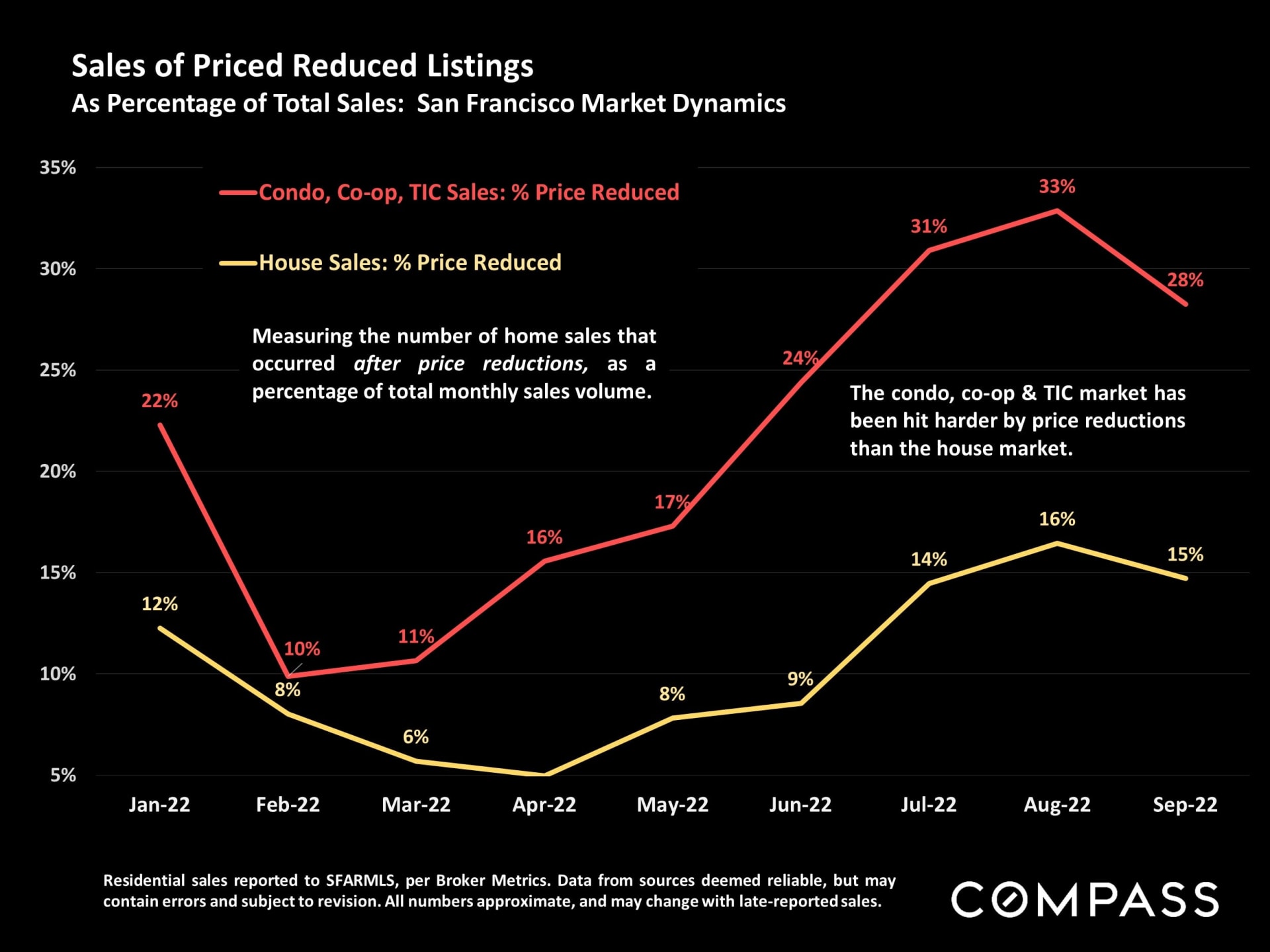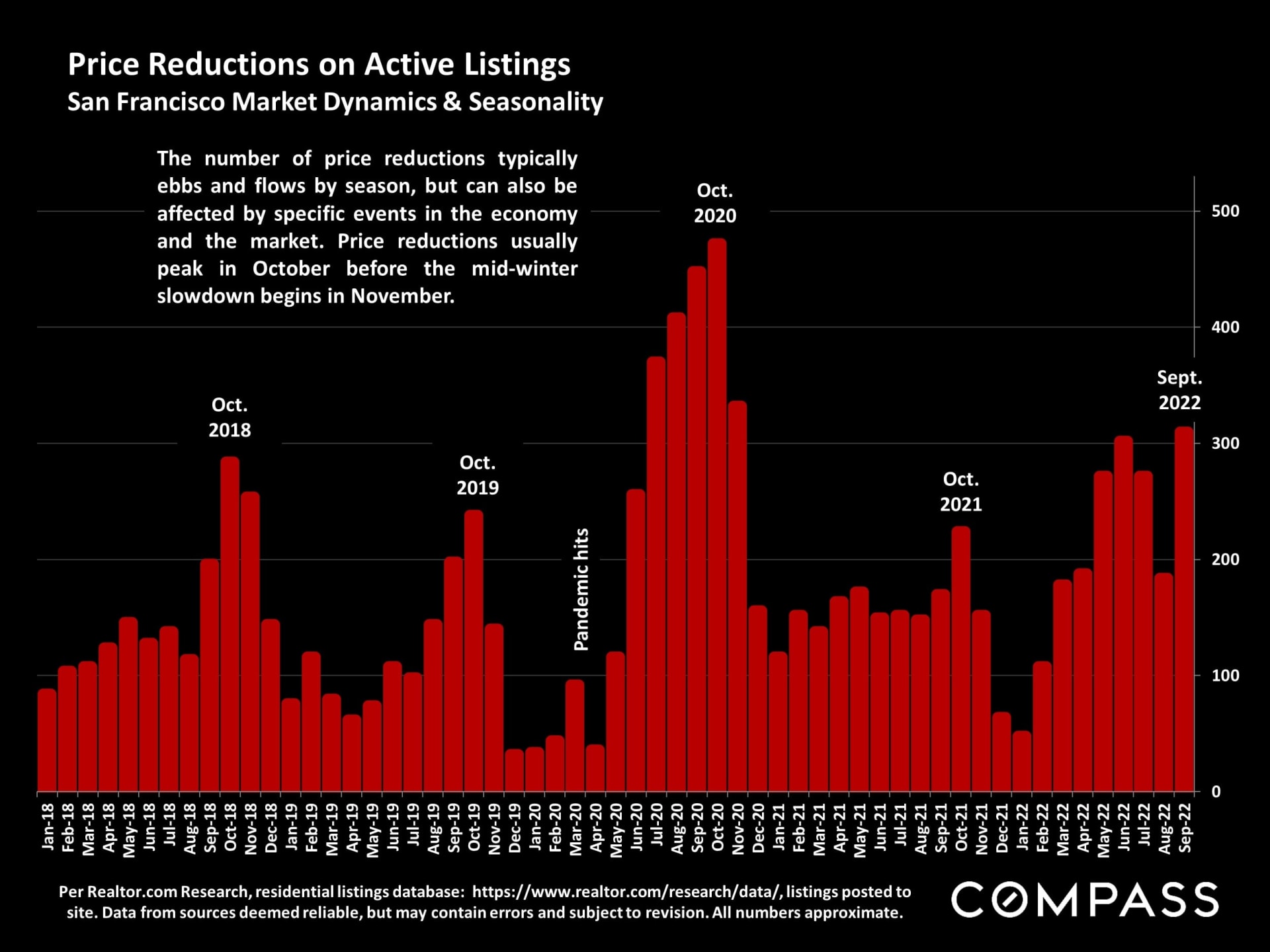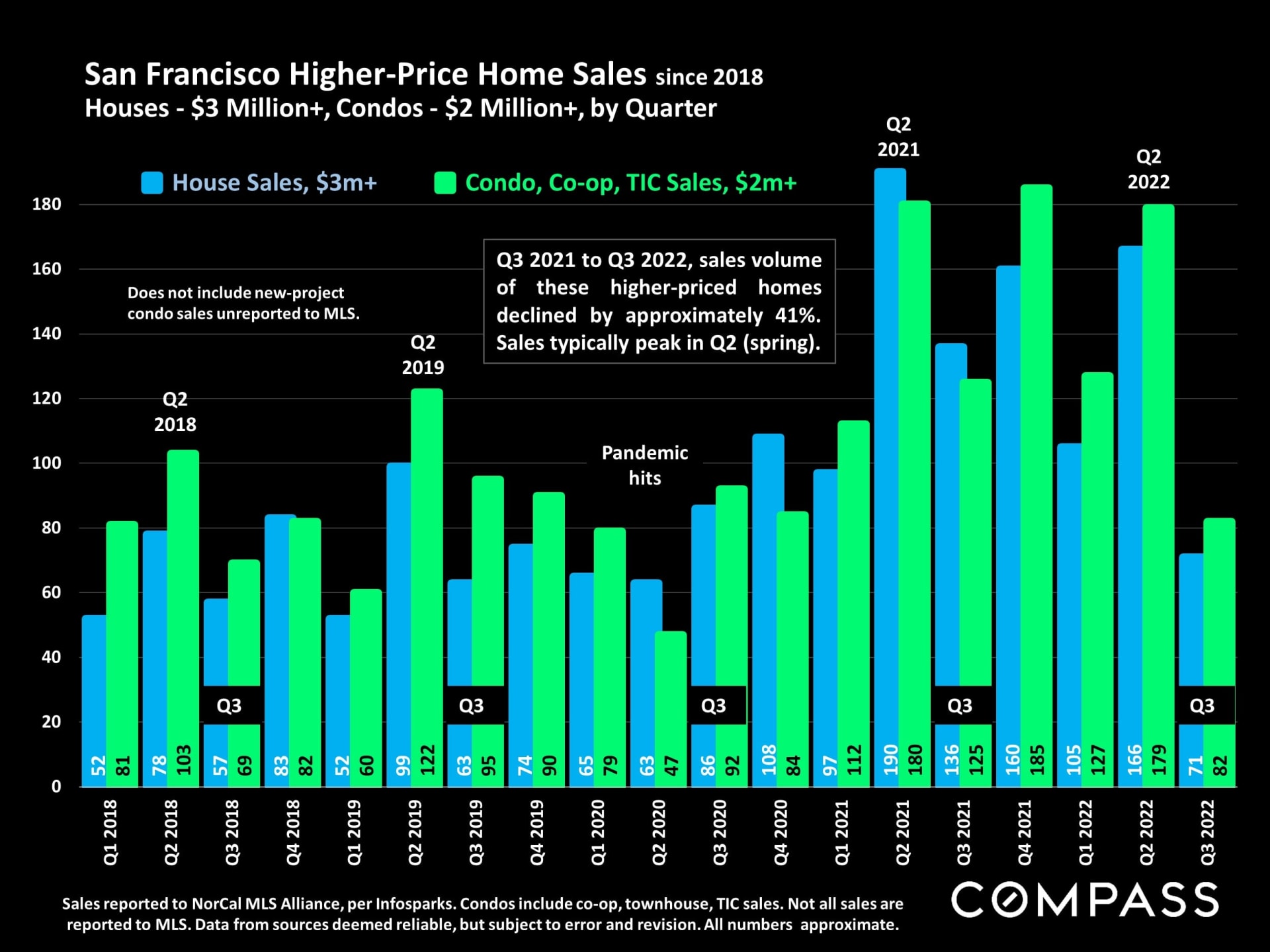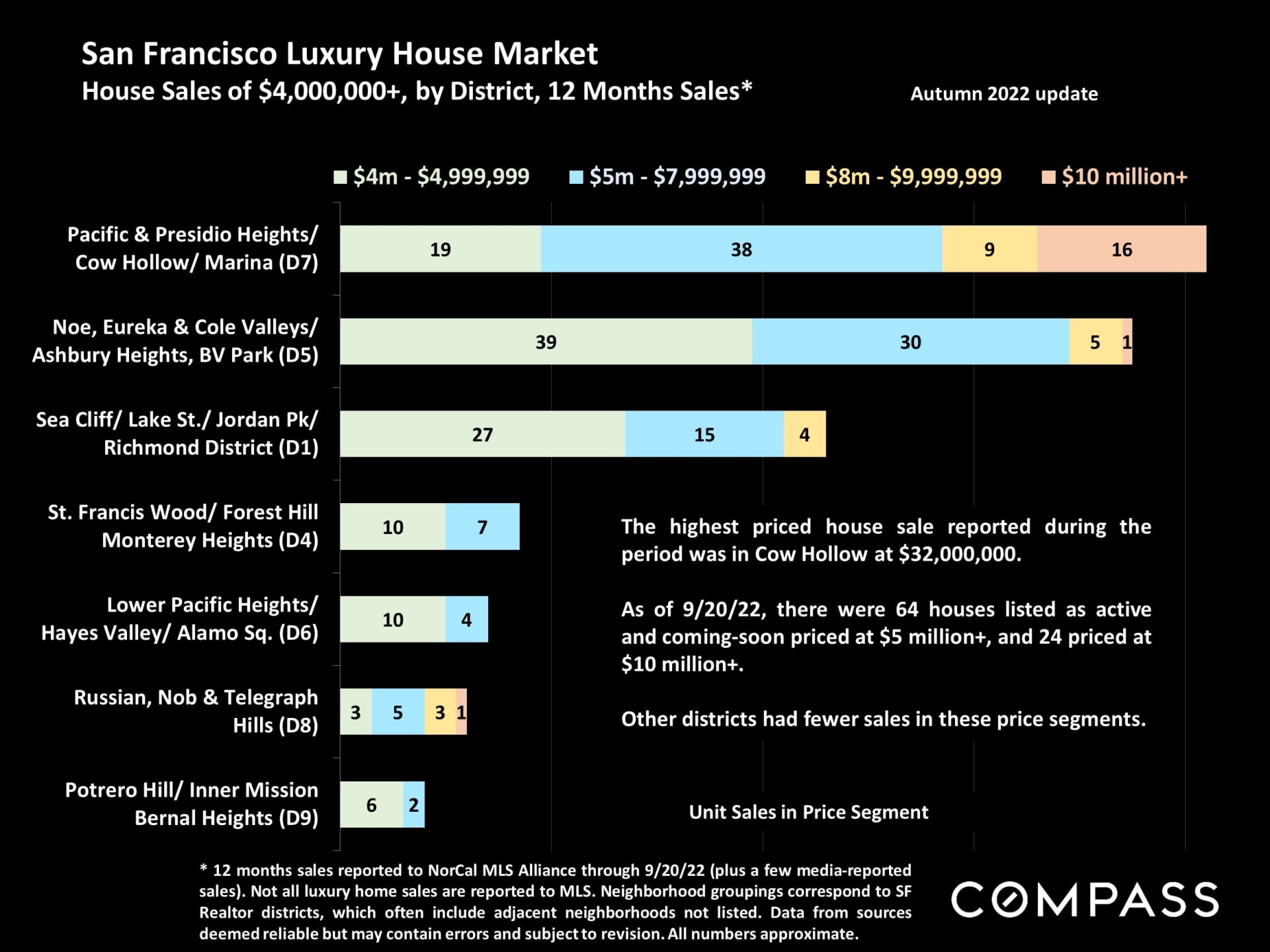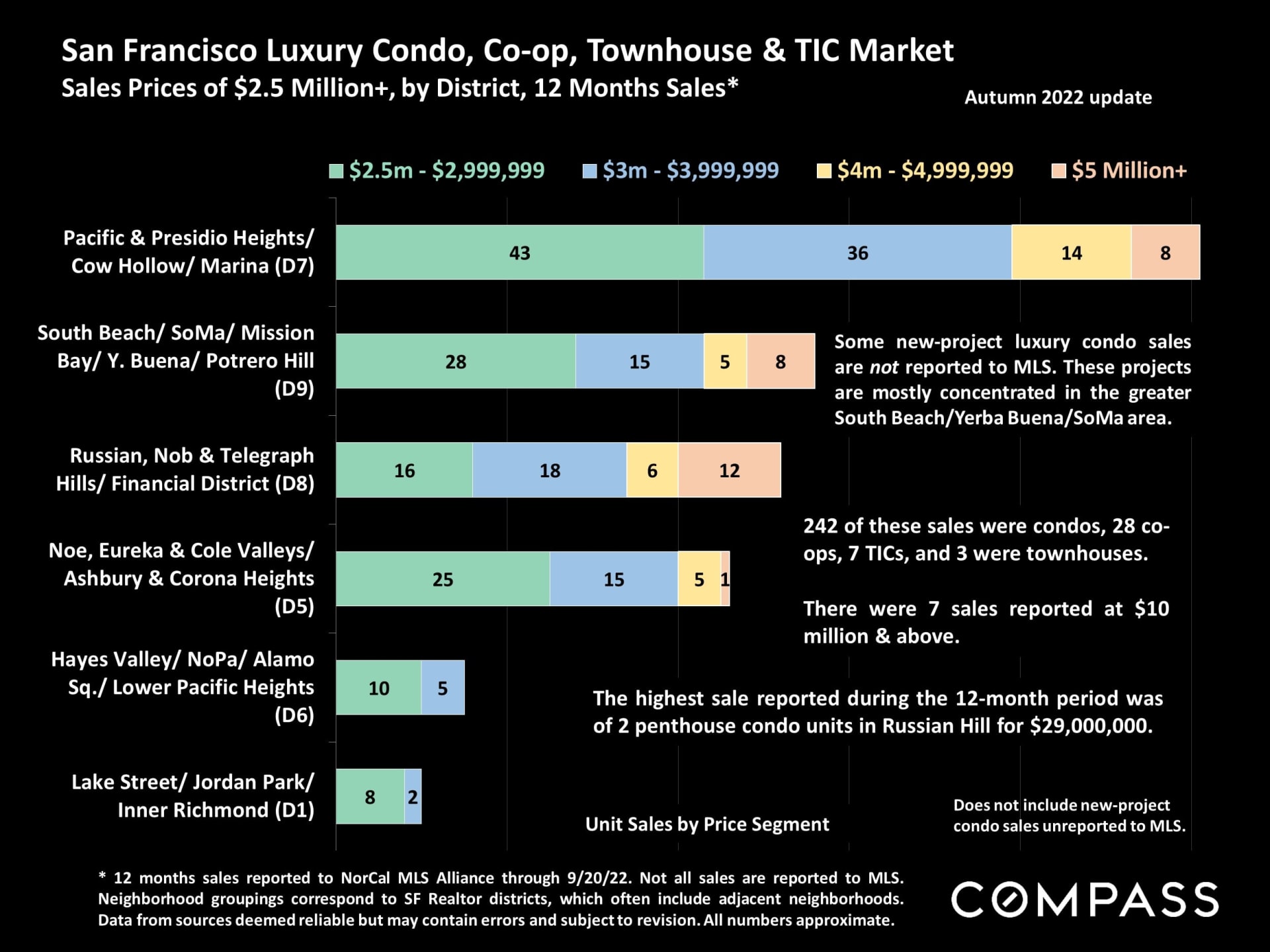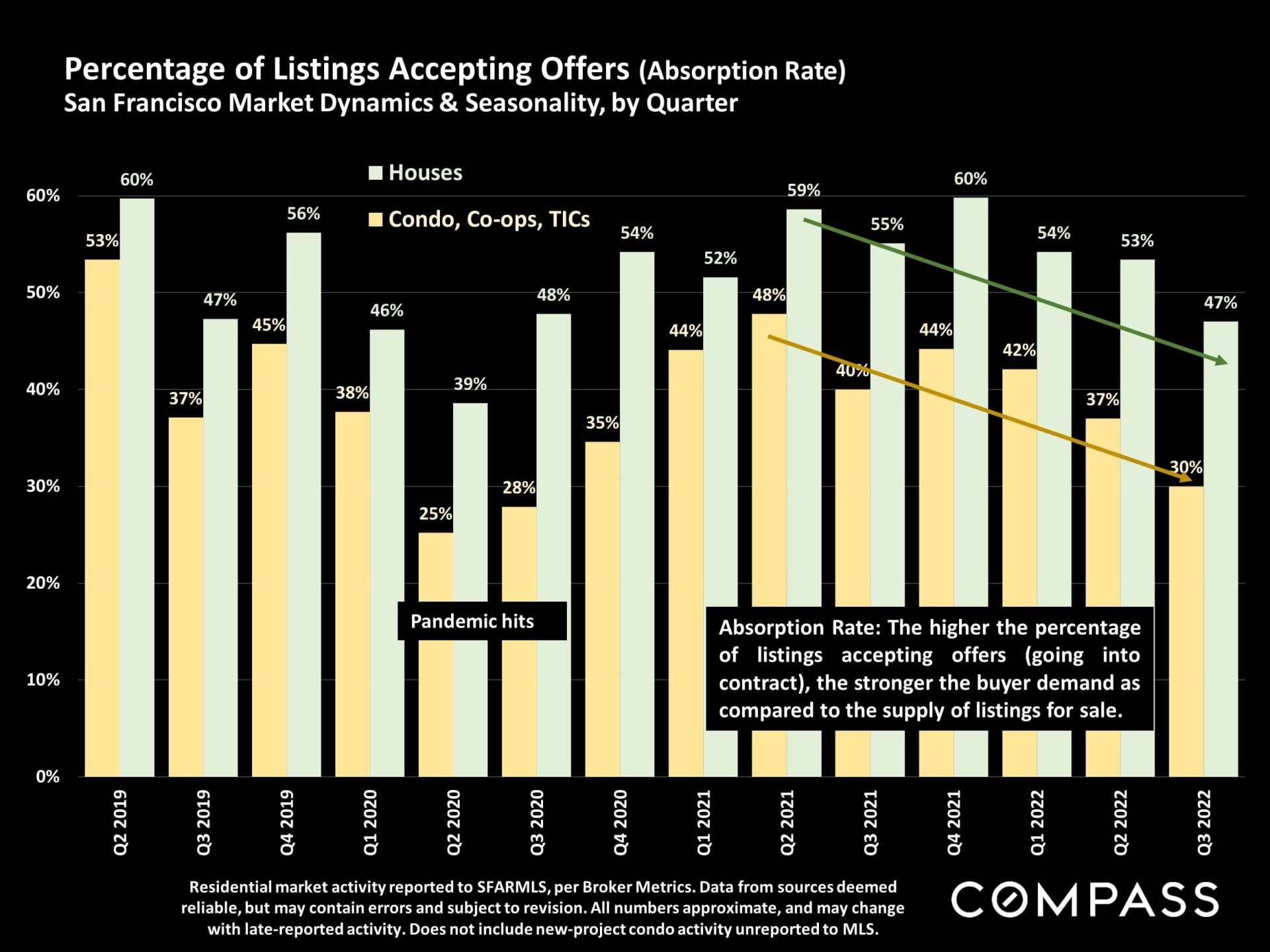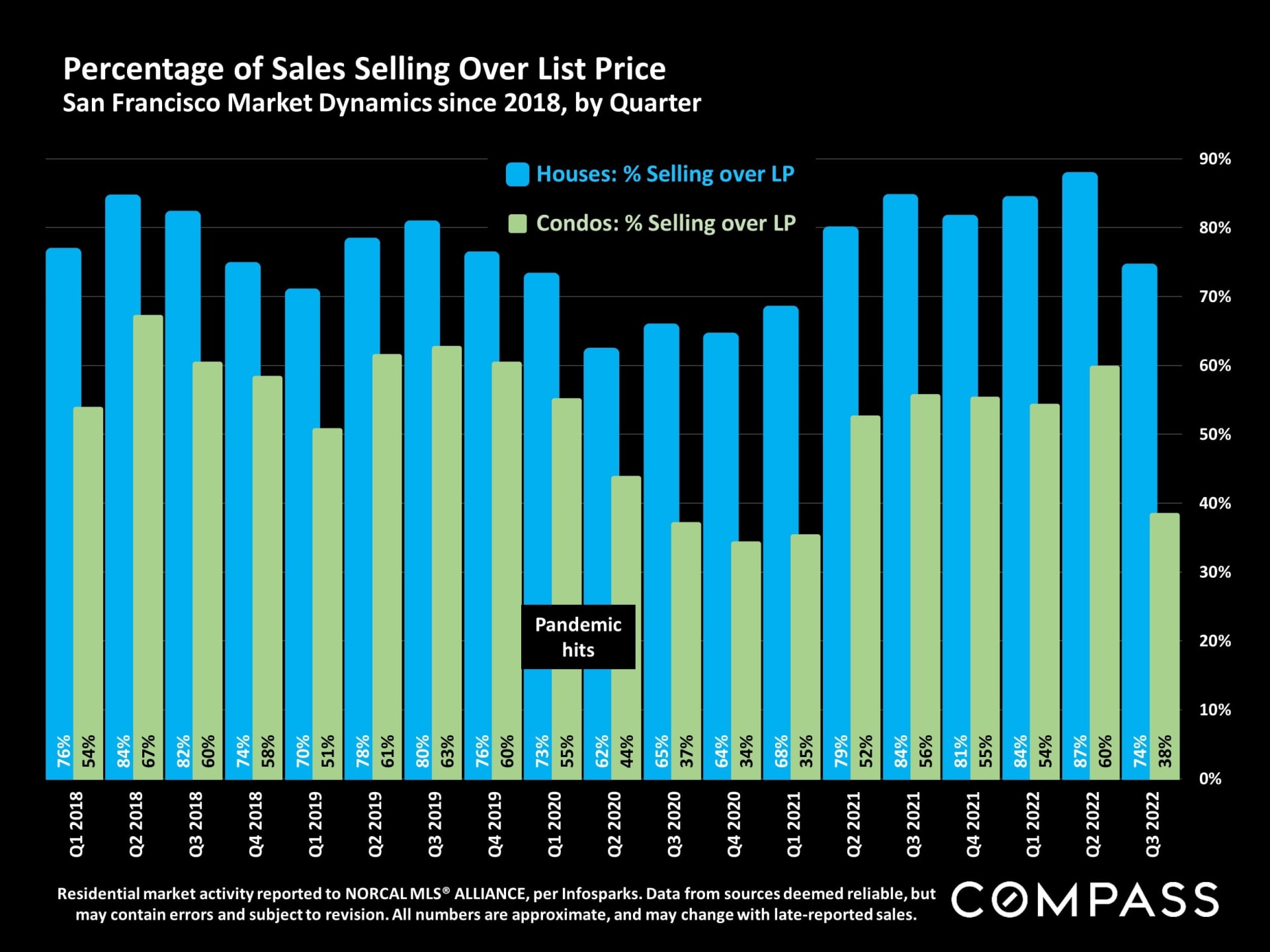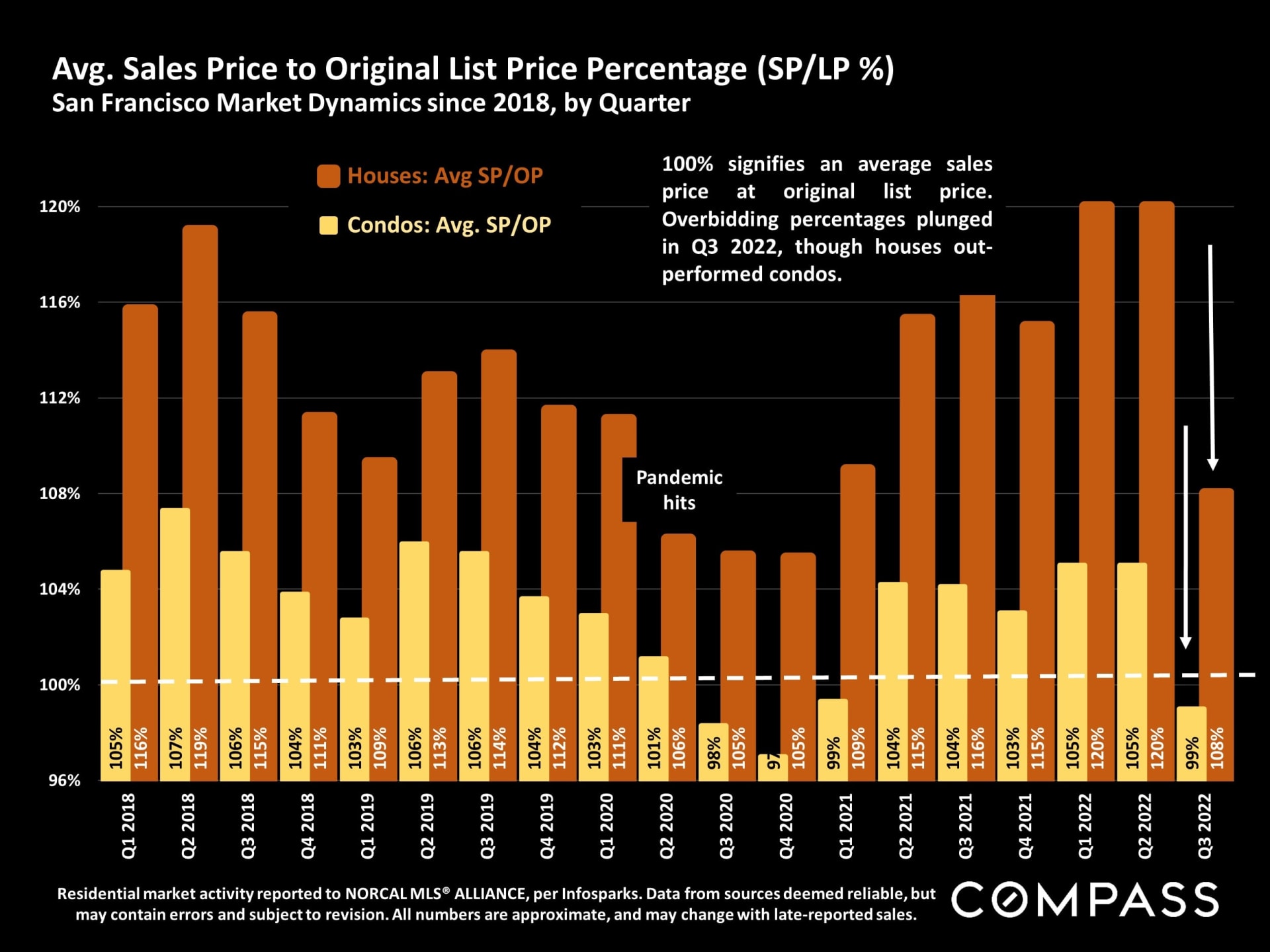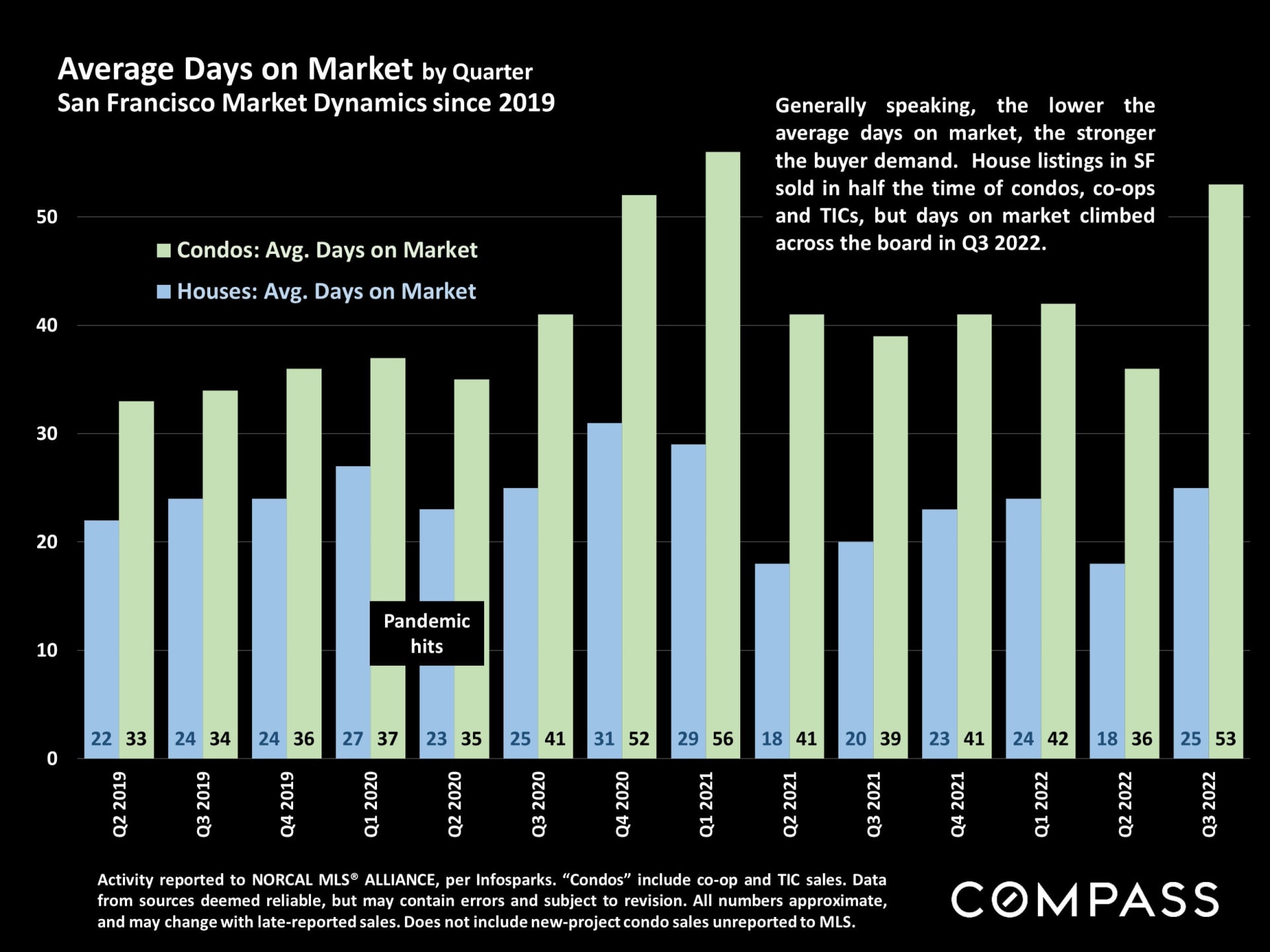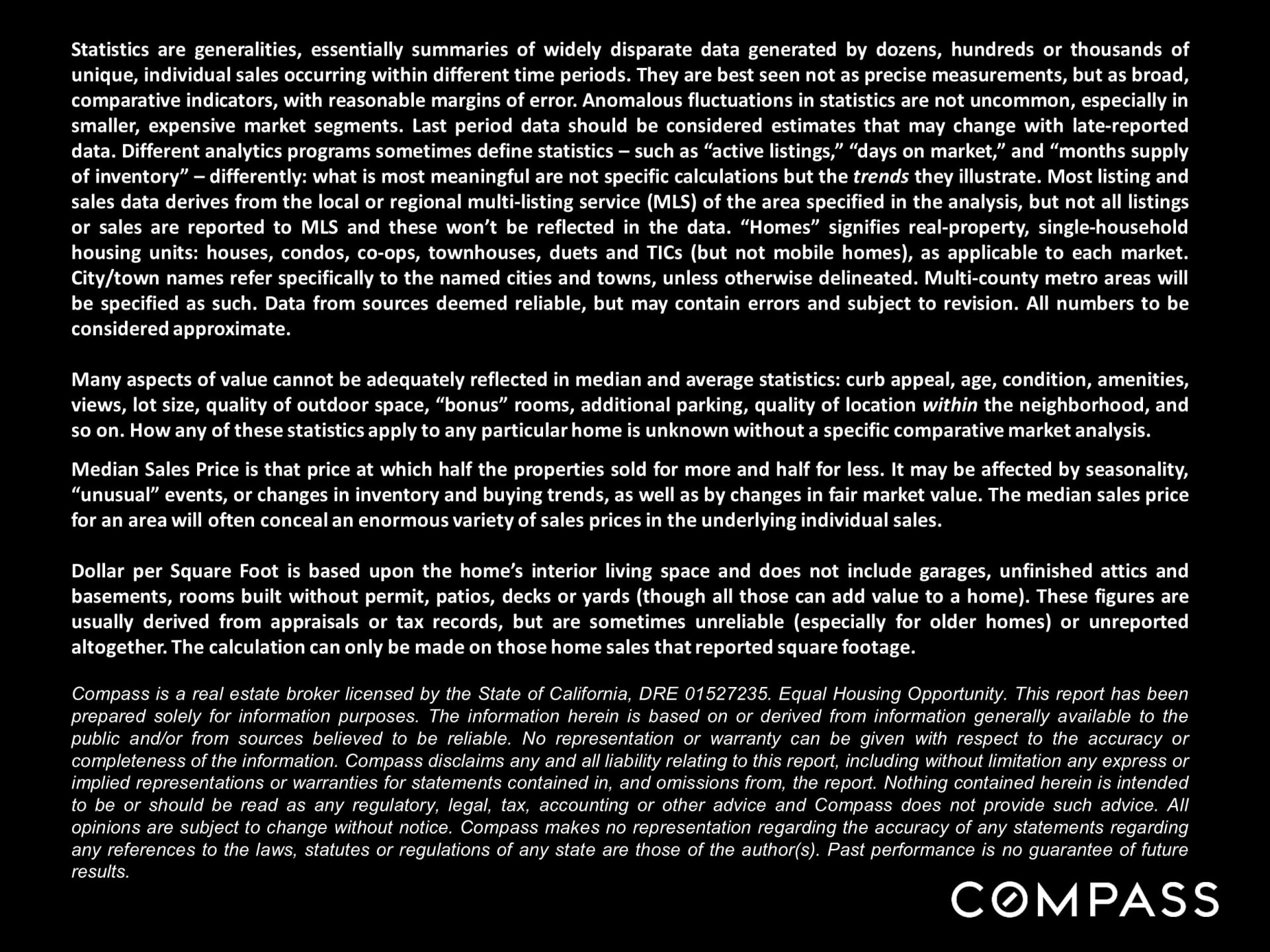San Francisco Real Estate
October 2022 Report
Virtually across the Bay Area, Q3 median sales prices retreated dramatically from their spring peaks, and SF was hit harder than most area markets. Part of this was due to seasonal trends – median sales prices often peak for the calendar year in Q2, then drop in summer – but part of the decline was clearly due to changing market conditions prompted by shifts in interest rates, inflation, stock markets, and consumer confidence. In this report, home prices will be reviewed from a variety of angles to provide greater context. On the supply and demand side, it appears that after the big drop in demand in early-mid summer, conditions have mostly stabilized: Generally speaking, sales numbers are no longer appreciably dropping, though overbidding statistics continue to decline and days on market to climb.
When looking at recent market changes, it is important to remember how overheated the market was in 2021 and early 2022 – many quarter-to-quarter, and year-over-year comparisons are distorted by the unusual (sometimes frenzied) conditions that prevailed then. It is also wise not to jump to definitive conclusions based upon a single quarter’s data: The economy and real estate market are still in a period of adjustment.
Comparisons with the crash of 2008 continue to be made, but the precipitating factor in the 2008 crash – tens of millions of households talked into home loans they could never afford, forcing a tsunami of frantic sales during the great recession – simply does not apply today. Mortgage payments as a percentage of income, and loan delinquency rates are both close to all-time lows; most homeowners’ mortgages are held at historically low rates. There has been no surge of desperate sellers: New listing numbers are actually down from last year. Stock market declines, though substantial, cannot compare with those seen in 2008-2009, and employment remains very strong. This is not to minimize the correction the market is going through: There are certainly major economic and demographic challenges at play right now, but a market correction is not a crash, being more like a slow leak in an over-pressurized tire than a blowout on the highway at high speed.
The relatively short autumn selling season began after Labor Day and runs through mid-November. The mid-
winter holiday slowdown then runs through mid-January. Though sales continue in every month of the year,
listing and sale activity drops dramatically as we near Thanksgiving. Slower markets can offer opportunities to buyers, but the selection of homes for sale usually tumbles.
Our reports are not intended to convince you regarding a course of action or to predict the
future, but to provide, to the best of our ability, straightforward information and good-faith
analysis to assist you in making your own informed decisions. Statistics should be considered
very general indicators, and all numbers should be considered approximate. How they apply to
any particular property is unknown without a specific comparative market analysis.



